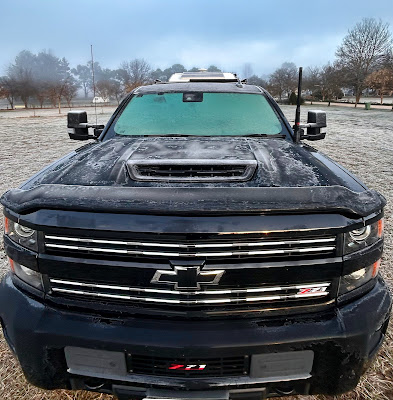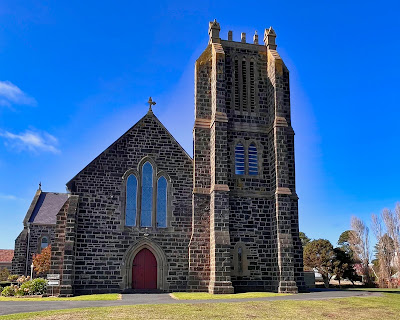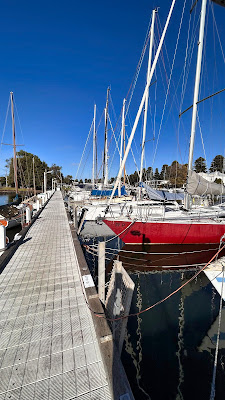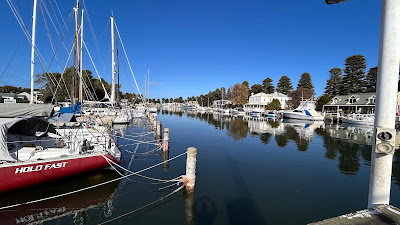We booked our Silverado into Vehicle Transformations last week, located in Beresfield, just outside Newcastle. We had heard glowing reports about their workmanship and quality on several Facebook sites, and we are glad we did.
Our Bushtracker Travels - Ros n Ross
Sunday, November 9, 2025
Chev Suspension Upgrade
Sunday, August 17, 2025
Our New Starlink setup
Friday, June 27, 2025
Tasmanian Trip Costings
The return trip on the Spirit of Tasmania boat for a 4WD and caravan at 16 metres, with two-berth cabins both ways, totalled $2,438.18.
Accommodation costs at caravan parks in Griffith, NSW, and in Tasmania, at the following sites: Cradle Mountain, Bothwell, Cambridge Park near Hobart, Port Arthur, Ross, Bridport, and Port Fairy in Victoria, on our return from Tasmania, totalled $1,917.98.
The national park stay was at Mt Field, costing $80.00.
Our low-cost camping fees totalled $1,137.46.
Tour expenses, covering the Woolnorth Tour to Cape Grim, the Macquarie Harbour and Gordon River Cruise, the West Coast Wilderness Railway, the Cape Raoul boat trip, the Isle of the Dead boat tour, Port Arthur entry fees, the Bruny Island cruise, and the Maria Island cruise, amounted to $3,008.00.
During the trip, we travelled a total of 10,345 kilometres and consumed 2,290 litres of fuel, with an average of 22.14 litres per 100 kilometres. Considering Tasmania's terrain, we are quite satisfied with these results.
Saturday, June 14, 2025
Belgrove Distillery - Kempton Tasmania
This blog entry couldn't be posted until a family member, who reads this blog, received their birthday present we bought from this distillery.
While staying at Bothwell in the Highlands, we drove to the outskirts of Kempton in the Tasmanian Midlands to tour Peter Bignell's Whisky Distillery.
Monday, June 9, 2025
Into New South Wales and heading home
Interestingly, there are two spots here that serve excellent food. The first is The Sir George, offering both accommodation and a restaurant, while the second is the Long Track Pantry, serving seasonal breakfast and lunch dishes.
Although we were away from the highway, the hum of trucks was still audible, but we both managed a good night's sleep.
We loved our morning coffee at the Long Track Pantry so much that we decided to buy a kilogram bag of their coffee. This way, we can enjoy our morning brew until we get home. We also purchased two on-site meals: butter chicken and slow-cooked lamb, which we'll enjoy on our journey home—especially if the weather becomes stormy, as forecasted.
After debating whether to extend our trip or head straight home, we decided we could be back in four days.
On Thursday, June 5, we travelled through Young along the Olympic Way, turned west at Bathurst, and took the Great Western Highway to camp at Lake Wallace, just outside Wallerawang and near Lithgow.
Monday, June 2, 2025
Victoria
 |
We had planned to leave on Monday, May 26, but the weather forecast for South Australia and Victoria prompted us to stay an extra day. We hoped the predicted strong winds would have passed before we set off.
We were there to meet Alan, whom I've known since our primary school days in Port Moresby. He recently purchased a camper trailer nearby and joined us for the night on Wednesday before heading off to Melbourne and then returning to his home in Perth.
On Saturday, we had a delightful lunch with friends at Das Kaffeehaus, known for its excellent service and tasty food. Ros and I ordered the beef and pork goulash, but we couldn’t fit in their strudels or other desserts.
On Sunday, June 1, we embarked on another cross-country journey, passing through Elphinstone and Heathcote, then travelling seven kilometres on dirt road to camp at Longwood Recreation Ground, just south of Euroa. For lunch, we savoured bangers, vegetables, and mash at the White Hart Pub in Longwood. We planned to meet friends here, with whom we had travelled along the Gary Junction Road from Alice Springs to Marble Bar 2007.


















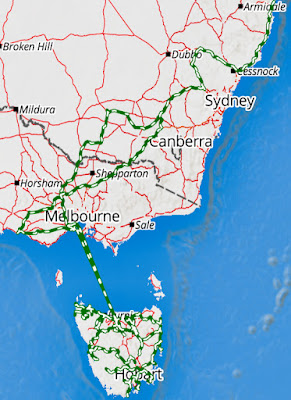
.jpg)
.jpg)
.jpg)
.jpg)
.jpg)
.jpg)
.jpg)
.jpg)
.jpg)


.jpg)












